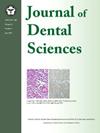Digital integration in dental education: A novel self-directed learning model using intraoral scanners for tooth preparation training
IF 3.4
3区 医学
Q1 DENTISTRY, ORAL SURGERY & MEDICINE
引用次数: 0
Abstract
Background/purpose
Traditional dental education faces challenges, such as high student-to-faculty ratios and disruptions like the COVID-19 pandemic, which limit hands-on learning opportunities. Digital technologies, including intraoral scanners, offer potential solutions by improving accuracy and efficiency in clinical practice. This study explored the integration of digital tools in a self-directed learning model for the fixed prosthodontic tooth preparation.
Materials and methods
This study, conducted with 81 fourth-year dental students, incorporated digital tools like intraoral scanners into practical training. Students completed a pre-intervention evaluation, followed by training on digital analysis tools, and concluded with a self-directed learning protocol. The study assessed students' theoretical knowledge and practical skills using pre- and post-intervention tests, digital scans, and feedback questionnaires. Statistical analyses, including paired t-tests, evaluated the effectiveness of the intervention.
Results
Significant improvements were observed in both theoretical knowledge (pre-test 86 %, post-test 98 %, P = 0.012) and practical skills, with the percentage of “perfect” crown preparations rising from 14 % to 73 % (P < 0.0001). Occlusal reduction showed improvement but remained challenging for some students. Digital tools reduced student anxiety, with 77 % of students reporting decreased anxiety during practical exercises.
Conclusion
Integrating digital scanning technology with traditional teaching enhanced student competence in tooth preparation, reduced anxiety, and provided objective evaluation criteria. The self-directed learning model supported skill development and independent problem-solving, indicating the potential for broader application in dental education. Future research should explore long-term impacts on clinical performance and optimize digital tool integration throughout the curriculum.
背景/目的:传统的牙科教育面临着各种挑战,例如学生与教师的比例过高,以及 COVID-19 大流行等干扰因素,这些都限制了实践学习的机会。包括口内扫描仪在内的数字技术通过提高临床实践的准确性和效率提供了潜在的解决方案。本研究探讨了在固定义齿预备的自主学习模式中整合数字化工具的问题:本研究有 81 名四年级牙科学生参加,将口内扫描仪等数字化工具纳入了实践培训。学生们完成了干预前的评估,随后接受了数字化分析工具的培训,最后完成了自主学习协议。研究通过干预前后的测试、数字扫描和反馈问卷来评估学生的理论知识和实践技能。统计分析(包括配对 t 检验)评估了干预的效果:结果:理论知识(测试前为 86%,测试后为 98%,P = 0.012)和实践技能均有显著提高,牙冠准备 "完美 "的比例从 14% 提高到 73%(P 结论:通过对数字扫描技术与传统教学法的整合,牙科医师的理论知识和实践技能均有显著提高,牙冠准备 "完美 "的比例从 14% 提高到 73%:将数字扫描技术与传统教学相结合,提高了学生的备牙能力,减少了焦虑,并提供了客观的评价标准。自主学习模式支持技能发展和独立解决问题,这表明它有可能在牙科教育中得到更广泛的应用。未来的研究应探索对临床表现的长期影响,并优化整个课程中的数字工具整合。
本文章由计算机程序翻译,如有差异,请以英文原文为准。
求助全文
约1分钟内获得全文
求助全文
来源期刊

Journal of Dental Sciences
医学-牙科与口腔外科
CiteScore
5.10
自引率
14.30%
发文量
348
审稿时长
6 days
期刊介绍:
he Journal of Dental Sciences (JDS), published quarterly, is the official and open access publication of the Association for Dental Sciences of the Republic of China (ADS-ROC). The precedent journal of the JDS is the Chinese Dental Journal (CDJ) which had already been covered by MEDLINE in 1988. As the CDJ continued to prove its importance in the region, the ADS-ROC decided to move to the international community by publishing an English journal. Hence, the birth of the JDS in 2006. The JDS is indexed in the SCI Expanded since 2008. It is also indexed in Scopus, and EMCare, ScienceDirect, SIIC Data Bases.
The topics covered by the JDS include all fields of basic and clinical dentistry. Some manuscripts focusing on the study of certain endemic diseases such as dental caries and periodontal diseases in particular regions of any country as well as oral pre-cancers, oral cancers, and oral submucous fibrosis related to betel nut chewing habit are also considered for publication. Besides, the JDS also publishes articles about the efficacy of a new treatment modality on oral verrucous hyperplasia or early oral squamous cell carcinoma.
 求助内容:
求助内容: 应助结果提醒方式:
应助结果提醒方式:


